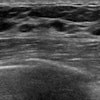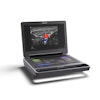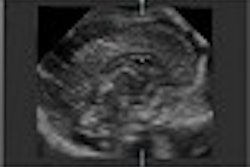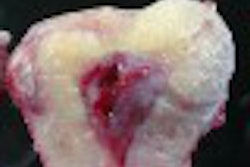(Ultrasound Review) Japanese surgeons investigated a series of patients with esophageal carcinoma, who underwent ultrasound examinations including an endoscopic approach, in order to analyze the impact on prognosis of the number of lymph node metastases detected.
"Developments in imaging techniques, especially in ultrasonography and endoscopic ultrasonography, have improved the presurgical diagnosis of lymph node metastasis in gastrointestinal tumors,: according to the authors. The results of their study were published in Annals of Surgery.
Over a ten-year period, the results of 329 consecutive patients with esophageal carcinoma who had esophagectomy with lymphadenectomy, as well as preoperative ultrasound examination for lymph node metastases were analyzed. Either a 3.75 MHz or 5 MHz transducer was used for examining the abdominal and cervical regions. Details of the endoscopic ultrasound technique were not well described by the authors. They specify the endoscopic transducer as a 7.5 MHz linear array, however it would have to be assumed that they used a sector transoesophageal transducer, commonly used for cardiac examinations. This method was used to examine the mediastinal region.
For both techniques, the ultrasound vascular landmarks such as the aorta, the celiac axis and the carotid arteries were easily identified and used for locating lymph nodes. Three ultrasound classifications were used for evaluating lymph nodes. Normal lymph nodes had poorly defined boundaries and diffuse homogeneous internal echoes, while metastatic nodes had well-defined boundaries with either weak and relatively sonolucent internal echoes or demonstrated notching and strong internal echoes.
Results demonstrated that the accuracy of ultrasound detection was over 70% in each category of TNM classification. The preoperative incidence of lymph node metastasis was 69%, while the histologic diagnosis was 59.3%, resulting in a significant correlation. Five-year survival rates were calculated for subgroups using both preoperative and histologic diagnosis and the survival curves were comparable. The 5-year survival rates for patients using preoperative ultrasound detection were: no metastatic lymph nodes 53.3%; one to three lymph nodes 33.8%; four to seven lymph nodes 17% and eight or more lymph nodes 0%.
"Not only the stage grouping of TNM classification but also the number of lymph node metastases determined by ultrasound and endoscopic ultrasound before surgery may be useful for predicting prognosis in patients with esophageal carcinoma," they concluded.
"Number of lymph node metastases determined by presurgical ultrasound and endoscopic ultrasound is related to prognosis in patients with esophageal carcinoma"S Natsugoe et al
First Department of Surgery, Kagoshima University School of Medicine, Kagoshima, Japan
Annals of Surgery 2001(December); 234:613-618
By Ultrasound Review
January 7, 2002
Copyright © 2002 AuntMinnie.com



















